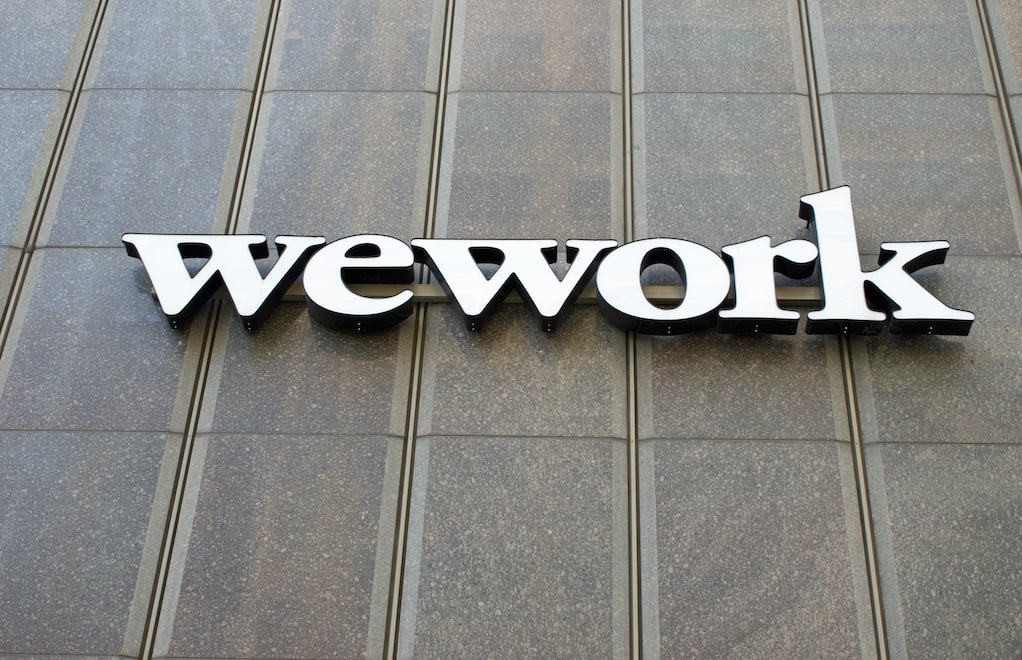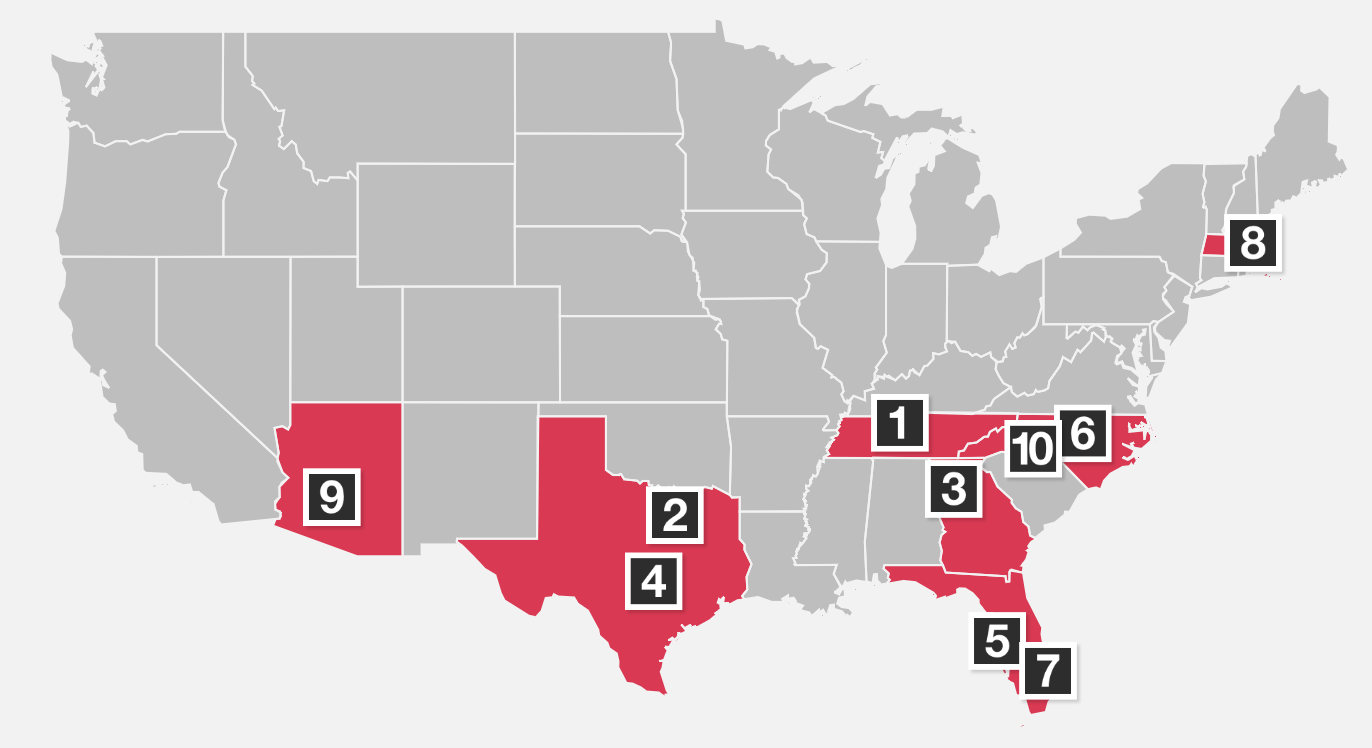In this article, you'll learn:
- The economic challenges leaving 2022 and their impact on commercial real estate in 2023.
- The wave of layoffs and their influence on office space demand and utilization.
- How industrial landlords are benefiting from increased demand due to changes in work and consumer habits.
- The evolving role of technology in reshaping office spaces and corporate priorities.
- Why commercial tenants have more negotiating power and opportunities for growth in 2023.
Leaving 2022, most of us can probably agree on one thing: It sucked. From the highest inflation in 40+ years to widespread to rampant office vacancies to the ever-growing national debt, it’s rare to find any business fully unscathed by financial the disruption.
Of course, as an international community, we are still adapting to the after effects of the 2020 pandemic. We can’t ignore its influence, less than three years since Americans entered quarantine the world is irrevocably different. And wile some degree of adaptation is expected, many are getting impatient with the never ending “grace period” as the country tries to pick itself back up.
Luckily for them, some things will come to a head in 2023. There's sure things to be prepared for, so read on. You'll learn the trends influencing the country that we inherited in 2022 and will likely persist through this year. It is critical knowledge for any commercial real estate professional.
Economic Circumstances Leaving 2022
Leaving 2022, the country is teetering on a recession. While most claim we’re already in it, there has yet to be an official proclamation.

Yet despite the official word, what do you think… Doesn’t this feel like a recession to you? As of the writing of this article, the U.S. hit the national debt ceiling (again).
According to CNN Politics, Treasury Secretary Janet Yellen wrote to House Speaker Kevin McCarthy that, ”the nation’s outstanding debt is at its statutory limit of $31.4 trillion and that the agency will implement extraordinary measures so it doesn’t default on its debt, which would have enormous consequences on the US economy, global financial stability and many Americans....
|
She said the measures would last through June 5.” -CNN Politics, quoting Treasury Secretary, Yellen |
So going into 2023, this will yield significant influence especially since such measures will be top of mind through the summer. Now couple this with record inflation. The country is deep in financial trouble and the burden has been placed on Americans and American businesses. Learn How to Combat Inflation by Right-Sizing Your Commercial Real Estate.
The Layoffs Have Begun
Increases in overhead costs have forced many major organizations to initiate layoffs and hiring freezes. This is especially true in the tech industry. Amazon, Meta, Twitter, Spotify, and Netflix (to name a few) have already begun cutting into their employee numbers or slowing down further hiring.
So even though leaving 2022, unemployment is relatively low, it is expected to rise with more layoffs. We just saw it again with We Work. The company just announced it was eliminating 300 jobs in an effort to cut costs. WeWork is Closing 300 Offices: What this Means for CRE Demand.

White collar job reduction is rumored to continue. And as unemployment trends up while company earnings trend in the opposite direction, CEOS and CFOS will likely be more careful with spending in the coming year.
|
“60% of execs think the economy will worsen in the next six months (up from 23%),” -the Conference Board’s 2022 C-Suite Outlook. |
Because of this, companies that had a wasted space problem from the pandemic will only experience worsened space utilization after layoffs. There’s likely to be another influx of companies looking to cut their corporate footprints. CRE is one of the biggest determinants of a company’s EBITDA. Therefore, savings here go a long way. So, behind layoffs, slashing office space will likely be many organizations’ second line of defense against a recession. Learn How to Right-Size Your Real Estate in a Recession.
What the CRE Community Can Expect in 2023
Now, not that it’s a competition, but if you work in commercial real estate, you probably had a harder year than most. Well, unless you’re an industrial landlord.
Industrial Landlords
Simply, the way we work has been irrevocably changed. The phenomenon of online, remote, or hybrid work (whatever you want to call it) has fundamentally shifted or definitions of productivity. And with it, so have our expectations of what is possible through the internet.
 Read: Will the Future of Warehouse Demand Turn Multi-Story?
Read: Will the Future of Warehouse Demand Turn Multi-Story?
The rising empire of Amazon has shown people that one-day delivery is possible. Online retailers everywhere have been thrust into, trying to keep up. Consumers have gotten used to a new standard of convenience and businesses are following the money. As such, the demand for efficient industrial space has skyrocketed. So, if you’re an industrial tenant, get ready for some more competition for space.
There are certain things you can't afford to mess up if you're looking for warehouse space. So watch the free course below to find the best warehouse for the best price.
Office Landlords
On the inverse, offices that were once considered premium are now ghost towns. Office occupancy rates at 50% and vacancies will follow. This is occurring in what was historically the country’s biggest cities. So, 2022 was hard on office landlords and 2023 will likely be only worse. According to a study titled "The Office Apocalypse", out of the only 30% of tenants who have had to renew pre-pandemic leases, overall revenue has already gone down 17%. This next wave, the 70% of tenants approaching renewal options, will be a doozy for landlords- and they know it.
Commercial property owners have never had it this tough. Now, they’re becoming more willing to go the extra mile to secure a long term, credit worthy tenant. For many, this means generous incentives. We are now seeing a phenomenon never before seen in CRE: Office landlords covering soft costs in Tenant Improvement Allowances.
Even in areas where job and population growth have returned to or exceeded pre-pandemic levels, landlords are bending further in negotiations. This indicates how much evolution has taken place in the nuanced relationships between corporate tenants and property owners. Offices are being held to higher standards across the board. And since WFH is an ever-present option, many tenants don’t necessarily see the value in an expensive redesign if no one is going to the office. However, cutting edge landlords will likely be willing to work with a tenant and cover (at least the cost of some) renovations. Doing so will likely increase the value of their building anyway.
Return-to-Office Upgrades for Tenants
Cutting-edge renovations and redesigns are becoming more common as businesses attempt to use their commercial spaces to be more competitive in the war for talent. As companies gradually try to pull employees back into the office, they are relying on premium upgrades.
We’ve already seen it with companies like LinkedIn. They upgraded their corporate offices with new seating arrangements, cafés, high-tech features, etc. to encourage employees working from home to come back to a comfortable and productive environment.

The trend for renovations will likely continue, due in part to the skyrocketing Tenant Improvement Allowances that we mentioned in the section above. Companies are getting serious about how their workplaces influence their team members’ urge to go to the office. It’s happening now and will likely continue as more tenants approach the expiration of pre-pandemic leases.
So, if you’re part of the other 70% of tenants approaching a pre-pandemic lease renewal, you have a lot of leverage to get the terms, price, or renovations you need to upgrade your tenancy.
If you're looking for new office space in 2023, there's things you'll want to be prepared for. Learn all the steps you need to find the best office space for the best price.
New Technology Will Continue to Evolve
It's obvious that a technological revolution has occurred. The new standard for corporate productivity includes:
- Private offices for hybrid meetings
- Smartboard projection technology
- Interactive cameras
- Touchless technology, etc.
 AI- responsive cameras are becoming standard in hybrid conference rooms. Read: How to Create a Hybrid-Friendly Conference Room.
AI- responsive cameras are becoming standard in hybrid conference rooms. Read: How to Create a Hybrid-Friendly Conference Room.
As AI develops further by the minute, it will likely play a larger role in our 9-5s. For example, Chatbot GPT was released in November 2022. The AI writing service has streamlined artificial communication. With over one million users subscribing in its first week, it is poised to cause further disruption in the corporate world.
The growing influence of new technology is also changing the way people get to and from work. EVs are now ubiquitous on the road, likely to become more common with economic incentive pushes. Many offices already provide sufficient EV parking and charging stations in employee lots. So, if you don’t, it’s time to consider adding them to stay on track. Not only does it signal to your employees that you care about their commute, but it also sends a positive message about brand sustainability.

This also affects industrial tenants. Tesla has already developed self-driving and electronic 18-wheelers, are you prepared to install the appropriate chargers for that capacity? Learn more about the Level of EV Chargers You Need for Your Business.
Recent AI evolution is only precursor of what’s to come in 2023 and beyond.
Different World = Different Priorities
Work from Home was a solution to social distancing, which capitalized on the existing technological structure that we already had. The pervasiveness of cell phones, laptops, etc. had been around for at least ten years before. Built into the way our society functions...
|
It was only a matter of time before people stopped putting up with a 2-hour commute. |
This is especially true for office workers who can successfully complete responsibilities using computers.
Given the newfound freedom from being tethered to a geologic radius of an office, Americans are reordering their priorities. Work from Anywhere will likely continue, since many have already moved away from the region their job is based.
2022 witnessed mass-migrations away from traditional business hubs as Americans moved to be closer to family, escape the expensive taxes and cost of living, and think about what’s most sensible.
 The Top 10 states with the most inbound moves in 2022, according to PwC
The Top 10 states with the most inbound moves in 2022, according to PwC
Across the board, sunbelt states like Texas, Florida, and Tennessee are benefitting from “the new normal” from the pandemic. Experiencing massive immigration from Americans fed up with the high cost of northern metropolitan areas, the sunbelt grew in prominence while the rest of the country struggled. Great Southern cities have experienced explosive growth and are climbing the ranks of the best cities for real estate. So, going into 2023, much of the best talent has moved to places including:
- Miami
- Atlanta
- Tampa
- Austin
- Dallas
- Nashville
- Many, many more
The continued examination of priorities and workplace freedom will likely lead to more Americans heading south in 2023. Learn: The States the Most Americans are Moving to.
Good News for Commercial Tenants in 2023
Through all the turmoil of 2022, the bottom line is that commercial tenants going into 2023 have more freedom more freedom. If your space isn’t perfect, you can get it as close as possible by skillfully negotiating. If you're willing to stay in your space but know it can be improved through a redesign, why not ask your landlord for a reinvigorated tenant improvement allowance?
They may be willing to fund renovations or adjustments to your space if they know you’re in it for the long haul.

If you want to cut your space, you can also prove your worth as a long-term tenant to possibly convince your landlord to do so. Or you can renegotiate for more favorable terms that may potentially lower the net value of your lease. Negotiation is key. What you get is what you give. You have the potential to do all these things. But it will hinge on factors like the demand for space in your area, how long you’ll stay, what would be the most efficient result for your company, and how much space you’re willing to take up.
If you are looking to relocate, the good thing is that you know exactly where most corporate relocations already have been. For example, over 300 financial service firms have moved to Miami. It’s no secret where people are moving. They’re going to the business-friendly states with low (or no) taxes. If you want to recruit this top, skilled talent, follow them and benefit from the same perks that they do. This is the reason that businesses across the North have picked up and moved South.
Some of the CBDs don’t carry the same status they used to. Why waste any more critical dollars on a space that doesn’t best suit your interests?
Start 2023 Right By Trimming CRE Costs
Smart real estate moves will continue to play a critical role in the preservation of corporate EBITDA going into the recession. As discussed, as a corporate tenant you possess the potential for tremendous growth despite how the market appears. There's never been a better time to reassess your commercial real estate in conjunction with the evolving opportunities that present themselves. And, you don't have to do it alone.
Tenant Reps are CRE experts who only protect the interests of corporate tenants. At iOptimize Realty® we are True Tenant Reps™. This means we never work for landlords, and we have a sole fiduciary to you, the corporate client. We employ extensive due diligence and market knowledge to capitalize on commercial real estate trends so you can retain a positive outlook (even in a recession). A Tenant Rep will analyze your portfolio and identify where there is room to relocate, right-size, and renegotiate your leases.
Talk to a True Tenant Rep™ at iOptimize Realty® today.
Learn the Top Cities for Commercial Real Estate in 2023.










